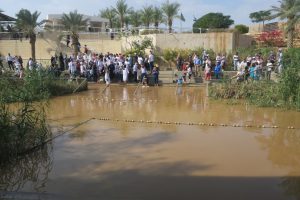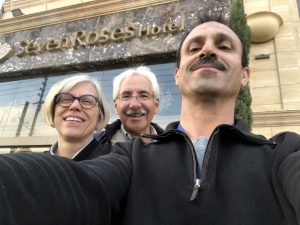We left the hotel at 8:00 this morning. Here is a funny notice we found on the desk in our room at the hotel giving the prices of “lost”, aka stolen, items. We were tempted to spend the $510 for the mattress, but ultimately decided against it.
We headed to Siem Reap and the ancient city of Angkor Wat that morning. The bus ride is 7 hours, but luckily we have a couple of stops en route. The ride gave us an opportunity to get to know our guide, Vuhta, a kind, gentle, funny 34 year old Cambodian man. He didn’t live through the Khmer Rouge, but he has known the hardship associated with that period in history. As a child he almost dropped out of school because he was literally starving. Luckily his father found a job as a construction supervisor in Siem Reap and thus was able to provide food for his family. Vutha lost one of his grandfathers to the Khmer Rouge.
He gave us lots background information. Cambodia is the size of Oklahoma and has 16 million citizens. The prime minister has been in power for 34 years. There was an opposition party for a while, but it has now been eliminated. The prime minister and his family are worth somewhere been $0.5B and $1B. The prime minister’s son is expected to eventually take over for his father.
Vuhta talked about education. Cambodia doesn’t have enough teachers, so children are slotted into one of two sessions a day in primary school, receiving just four hours of school per day. In lower and upper secondary school there are not enough hours to teach the students the necessary information to pass the graduation exams, so parents need to pay for supplemental education if they want their children to continue beyond secondary school. Many kids just drop out.
The medical system is similarly tragic. They don’t have enough doctors to care for the populace and medical school is very expensive. Corruption within the system is prevalent, so candidates who do not pass the necessary exams to become a doctor just bribe officials to get their license, further degrading the system. In effect there are many people impersonating doctors, providing inferior medical treatment to those they serve.
About 45% of the people do not have access to electricity. The government says they have a plan to bring that number up to 85% in five years, but it is likely just words. Limited electricity service significantly diminishes Cambodian’s access to information via the internet, fueling government ability to keep people ignorant and keep the current regime in power.
We passed a lot of rice fields. 80% of the Cambodian population are farmers. Vuhta explained the process of growing rice. The farmers lack the technology to make the rice fields as productive as neighboring countries — the fields in Vietnam yield twice as much rice as the fields in Cambodia.
Vuhta also talked about Chinese visitors to the country. The government is encouraging Chinese investment in Cambodia, but the Cambodian people don’t like it. Chinese investment and Chinese people are effectually flooding the country. They are buying property (they can’t own land but they can own buildings) and, as a result, drive up the price of housing and services, displacing poorer Cambodians. Furthermore, the Chinese have been upping the price of some of the most lucrative Thai sea coast areas to build casinos. Cambodians can’t afford to visit these places any longer and are thus being shut out from enjoying what was once a national treasure. Cambodians are very concerned about the amount of power the Chinese have and the leverage they use to impact their people.
There were about eight million land mines placed in Cambodia by the Khmer Rouge and the Vietnamese. Today approximately two million remained buried. The government projects that it will take about ten years to clear them, making a walk in the jungle a potentially lethal experience. Vietnam ultimately invaded Cambodia and drove the Khmer Rouge out of power. During the Vietnamese reign of the eastern provinces they sent young Cambodian boys into the forest to clear the land mines. We saw a number of people who were missing limbs as a result. Today, while that land has been returned to Cambodia, the Cambodians remain suspicious of Vietnam’s territorial intentions.
So while all of that is grim, it seems that most people have enough food to eat and shelter over their heads. Better than some places we’ve been.
We made several stops during our ride. The first one was Skuon, a village famous for tarantulas. We pulled up to a woman’s house. She has four children and selling tarantulas helps support her family. The Cambodia people have learned to eat quite a few things that seem gross to us including snakes, scorpions, and silk worms, out of necessity. It’s evidence of what they have been through.
Tarantulas live in holes in the ground where they feed on the roots of trees. Together we walked to the backyard, she found a hole and started digging. It wasn’t long before she had a tarantula in hand. He was feisty and ready to fight. She picked him up from the back and clipped his fangs with a pair of pliers. She has been bitten twice and she told us that the bite turns into a red, painful bump for several days. Allison, in our group, held the tarantula. We took the tarantula back to her porch area where she cleaned several of them in water. Then she killed them by pinching their bellies. Next she mixed together a little salt, pepper, garlic, and chicken powder, coated the tarantulas with the mixture and put them in hot oil to fry them. Preparation time was five minutes. While she was cooking, Rick got a good laugh by saying, in his best Julia Child voice, “first you take the tarantula . . .” Everyone except me tried at least a leg. Some people ate the bellies too. They all said it tasted pretty good. I couldn’t bring myself to try one.
Later along the road Vutha stopped the bus to buy lotus plants. He showed us how to peel the plant to find the seeds. I tasted one of these, it was OK!?
Next stop, a village that specializes in stone carvings. We stopped for only about 5 minutes. Here are pictures.
We drove on to our lunch spot and had a very nice lunch on the shore of a lake.
Back on the bus our next stop was the ancient bridge of Kampong Klein. The bridge was built in the 12th century during the reign of King Jayavarman VII (CE 1181 –1220). Until recently the main traffic in the area was still crossing this bridge. Nowadays the bridge is closed to trucks, busses and cars — only pedestrian and light traffic can cross the bridge. We walked across the bridge while our bus drove over the new bridge to meet us on the other side.
Our last stop along the road was to buy kralan from one of many women with roadside carts. These women fill hollowed out bamboo with a mixture of sticky rice, beans, coconut milk, and sugar. Then they stuff banana leaves on either end of the tube to seal it. Finally they roast the tube over hot coals. To eat the mixture you remove a banana leaf from one end, peel the tube away like a banana and eat the rice with your fingers. It was tasty!!
Eventually we arrived at our hotel. We had a little downtime before dinner so Rick and I walked to the supermarket next door and got some wine. We had a little cocktail hour with Ann in our room and moved to a restaurant across the street for dinner.
We are all very tired in the evenings a hit the hay fairly early. These OAT folks really keep us moving!

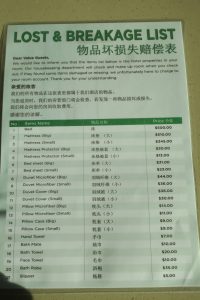








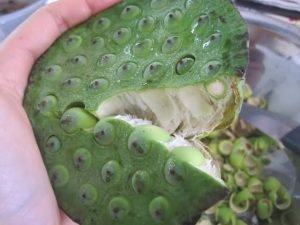






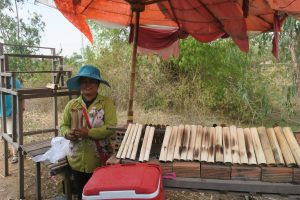

























 .
.




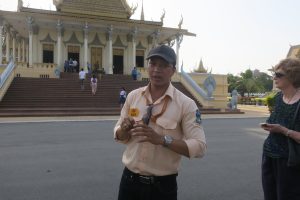
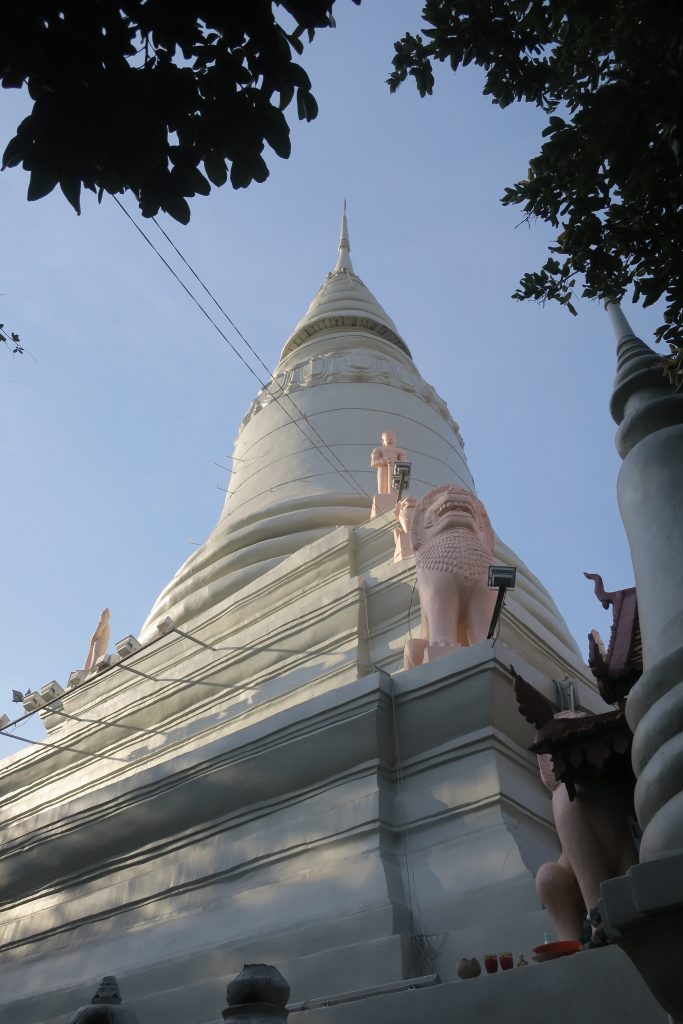
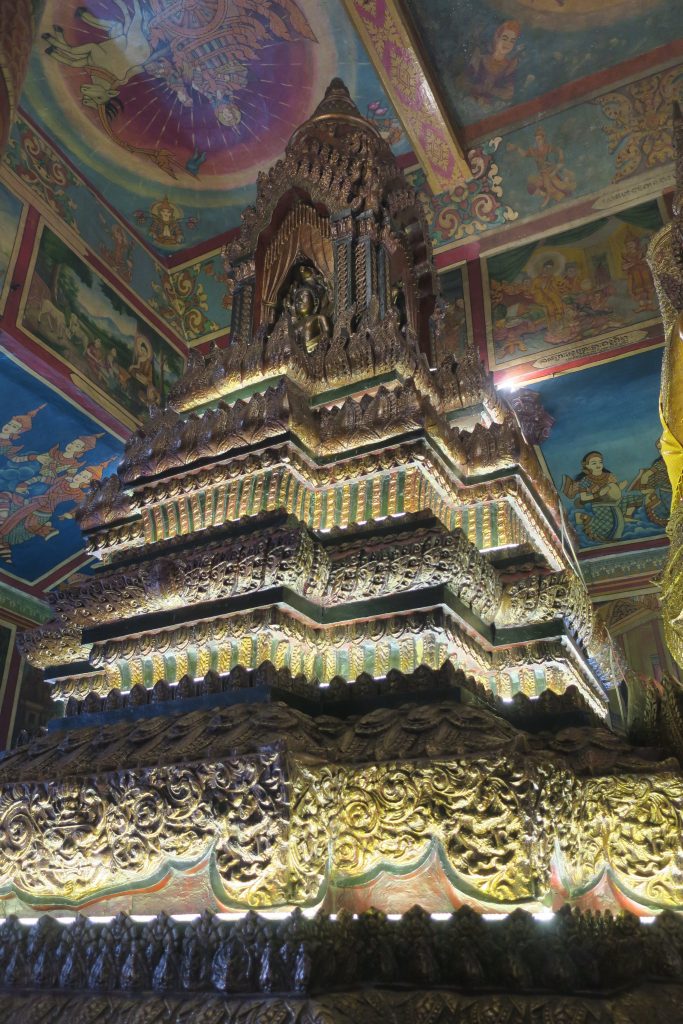
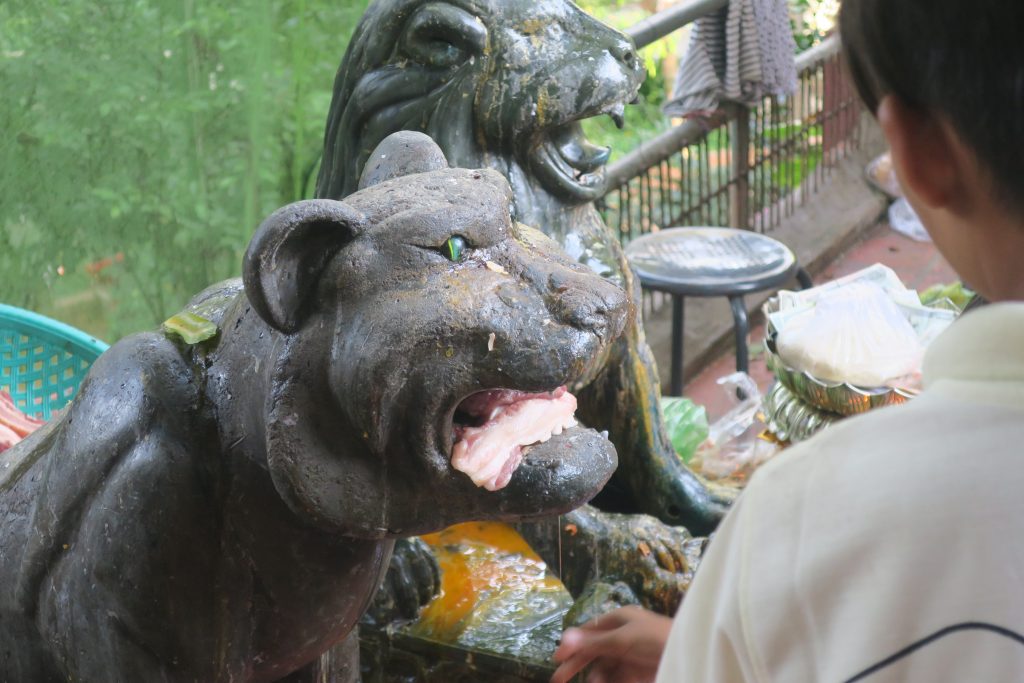
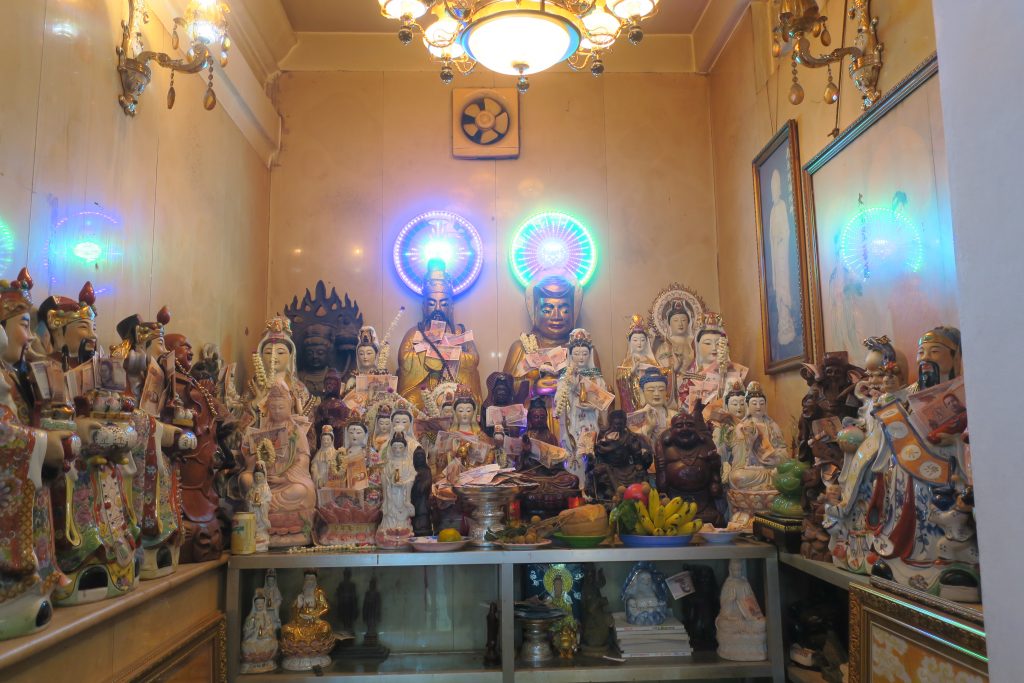
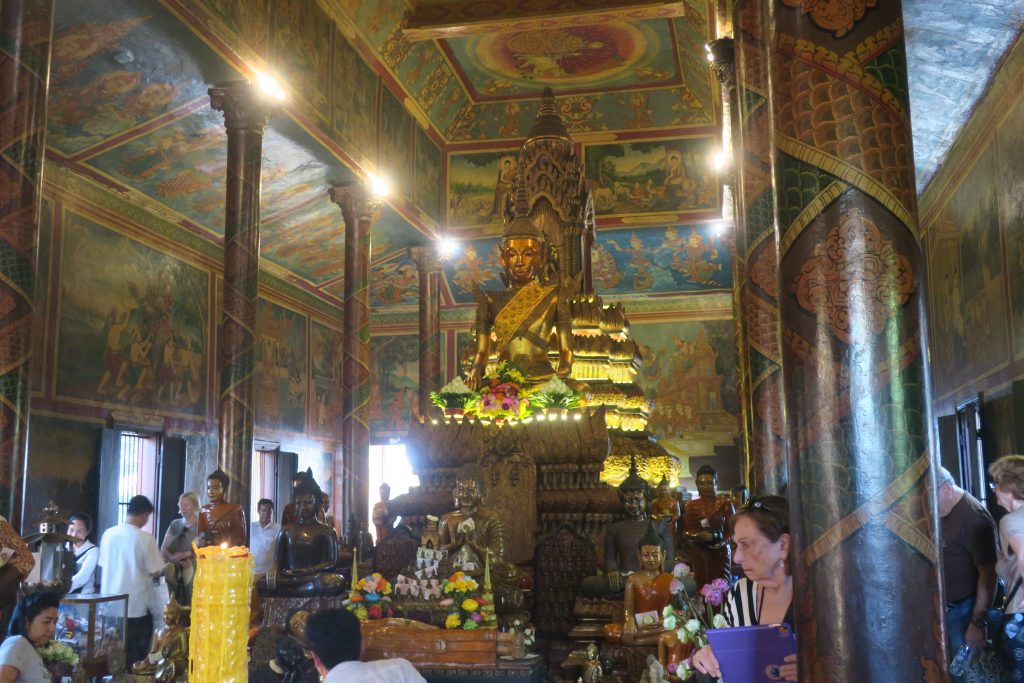
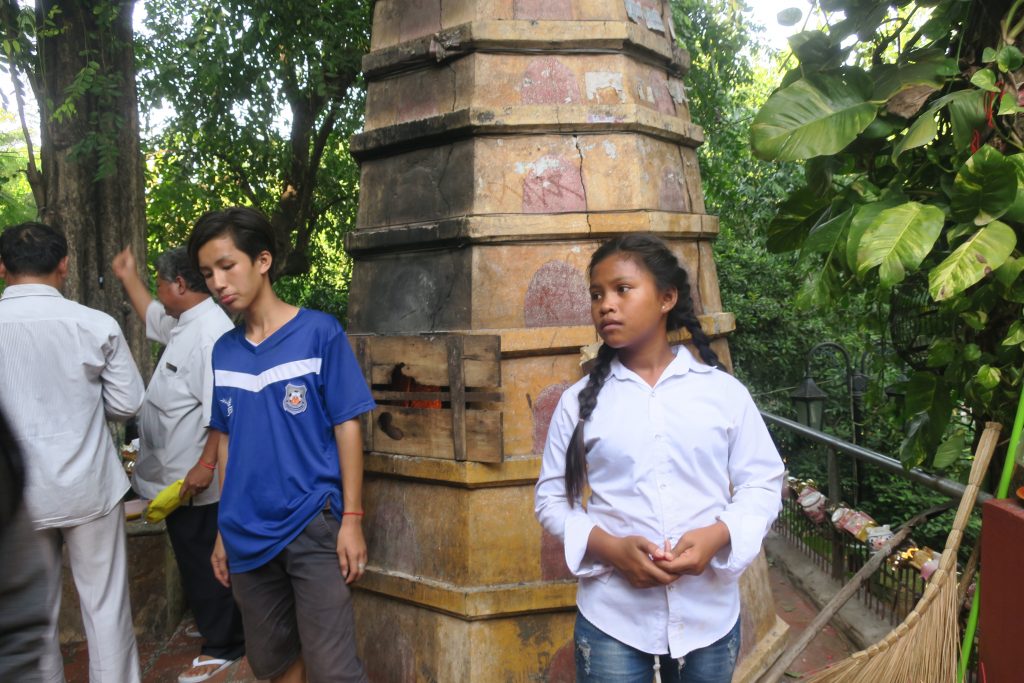
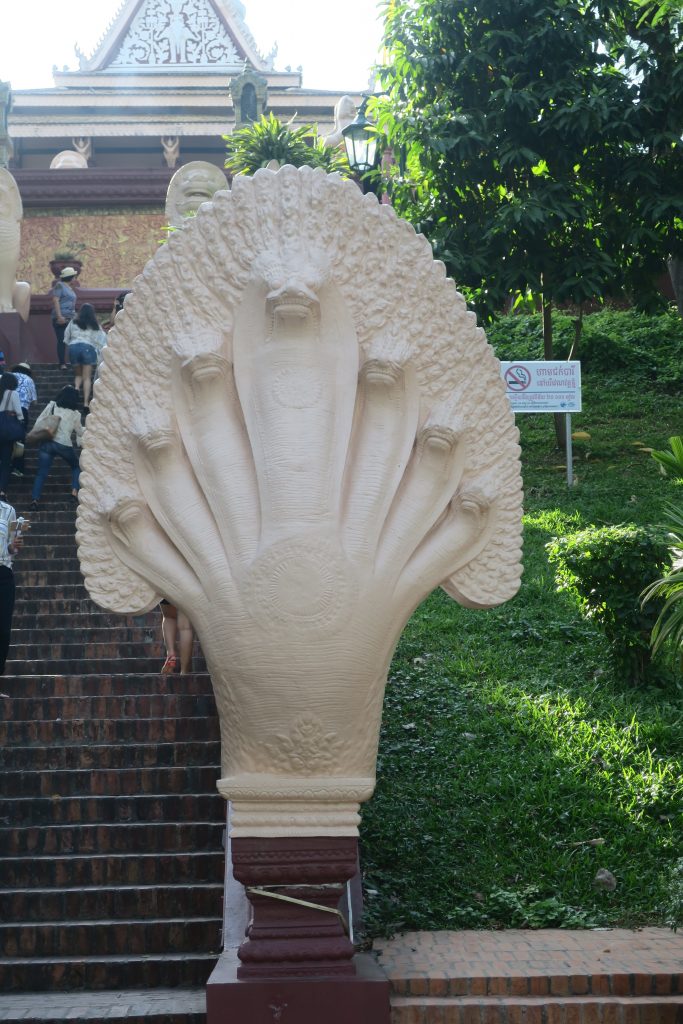
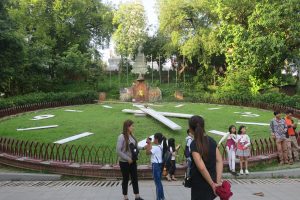
 . She said it tasted like chicken livers.
. She said it tasted like chicken livers.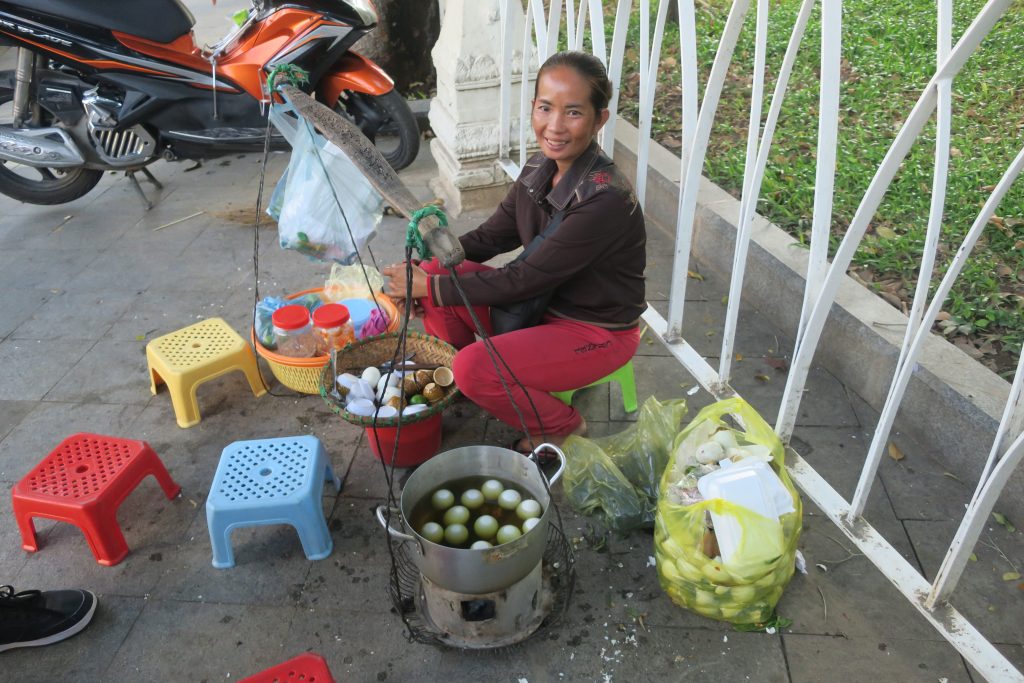
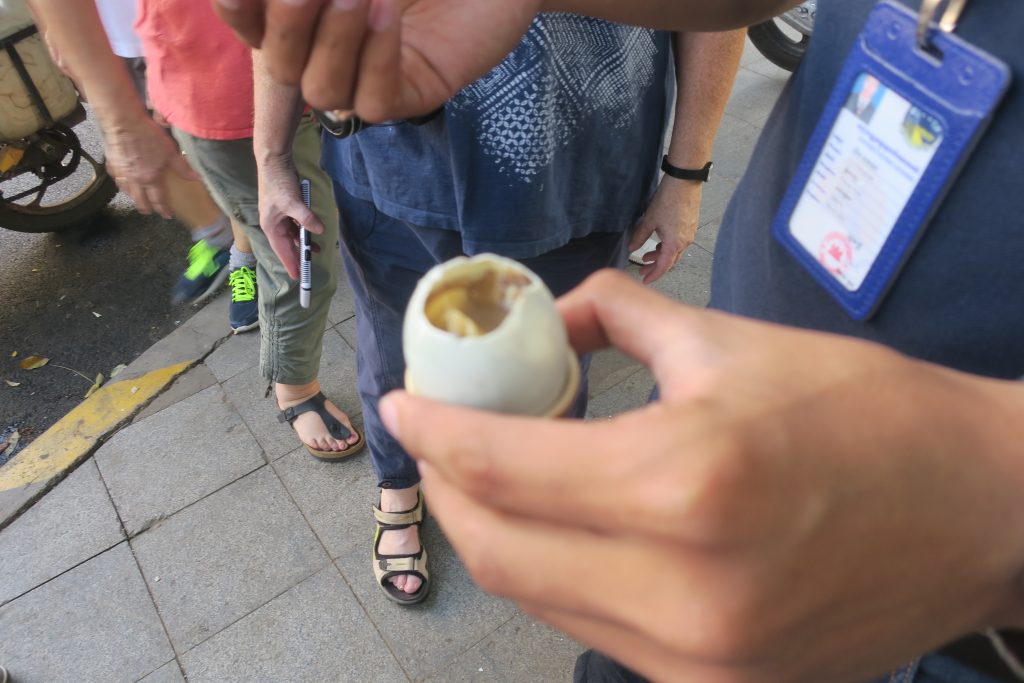
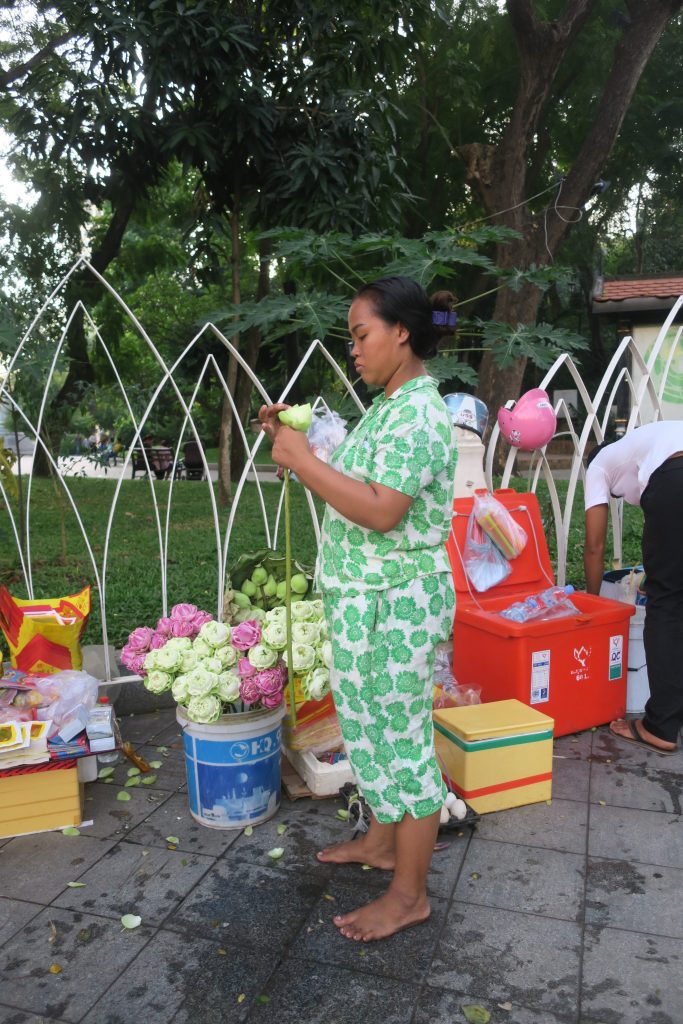
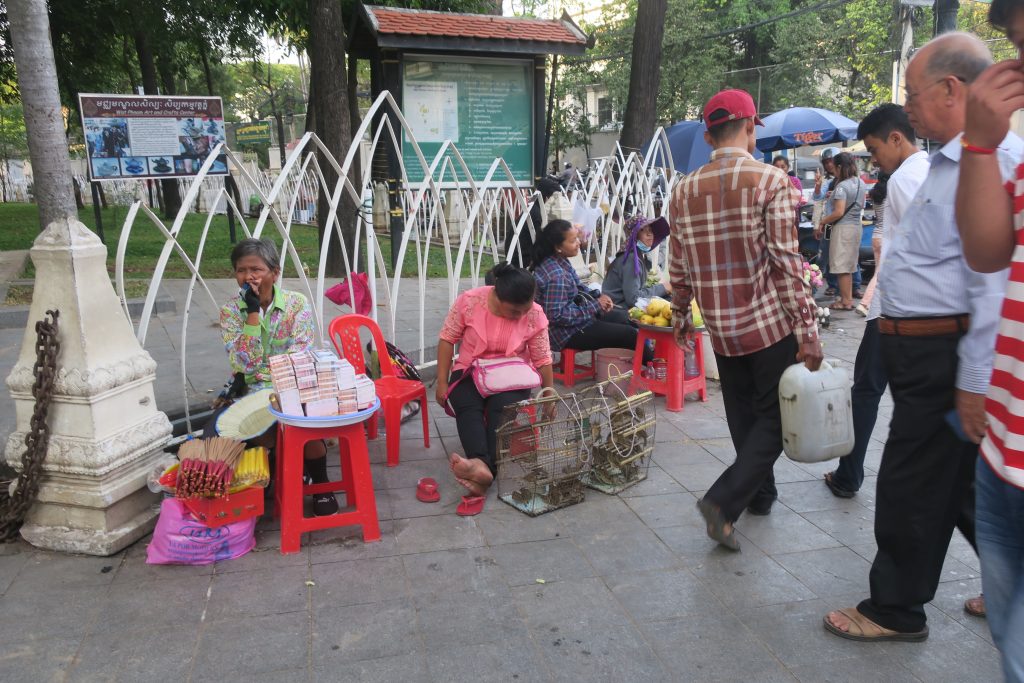

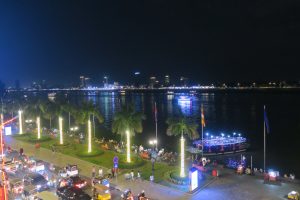

























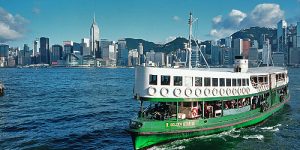





























 by 8. Let’s hope we can sleep until 4 or 5 o’clock!
by 8. Let’s hope we can sleep until 4 or 5 o’clock!


